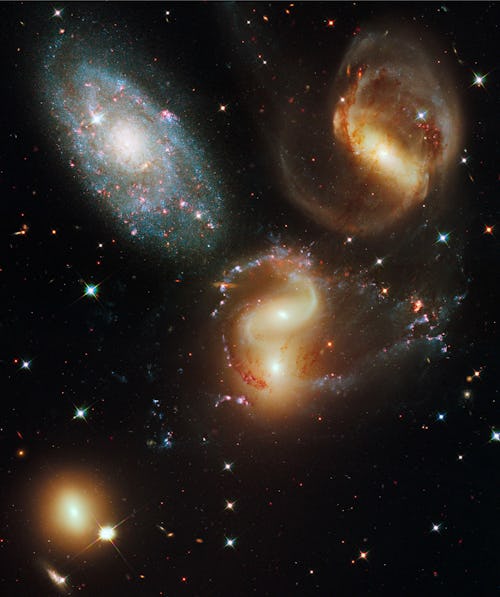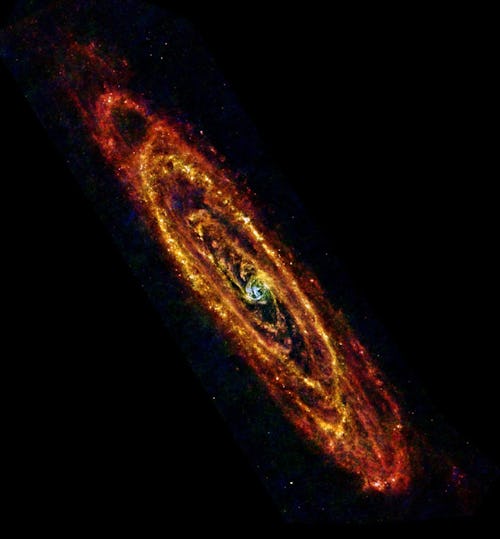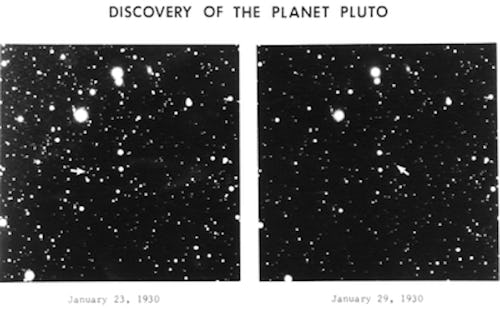
Astronomers, maybe more than anyone, appreciate what an island of perfection our Earth is. Our orbit may put us at a perfect distance from the sun for life to flourish, but it is too small to easily help astronomers determine how big the universe is.
Late Renaissance scholar Nicolaus Copernicus suggested that the Earth orbits the sun in 1543, but it took 300 years to prove it.
In 1838, a nearby star appeared to wobble because our viewpoint on Earth was moving due to our planet being in orbit around the sun. Such apparent motion is called “parallax.”
We can use only indirect means to find out how far away any external galaxy lies. Recent space missions allow us to see the apparent motion of billions of stars, but that still covers only a corner of our huge galaxy.
Until 100 years ago, it was greatly disputed whether other galaxies even existed or if the Milky Way was the whole universe.
Explaining the universe
The German philosopher Immanuel Kant published Universal Natural History and Theory of the Heavens in 1755, speculating that certain small dim patches in the sky might be analogs of our Milky Way. These “nebulae” (the word means cloud) were usually viewed as nuisances, confusing comet hunters. Only with the development of large telescopes in the early 19th century were some of them seen to have a spiral form.
Seeking, much like Kant, a mechanical explanation for the universe and the formation of the solar system, the French mathematical astronomer Pierre Simon Laplace published Exposition du Système du Monde in 1796. Laplace survived the French Revolution to become a government minister under Napoleon, and eventually minor nobility when royalty returned to France: such survival skills enabled him to publish several editions of his influential book.
In it, Laplace describes the collapse of a gas cloud to form a star and solar system, a process for which we now have direct evidence. It was perhaps natural that the spiraling of material to form a star became a preferred theory to explain the spiral nebulae.
There was no way to tell whether these spirals were new stars forming or Kant’s “island universes” until Edwin Hubble observed a star not wobbling, but instead varying in brightness in a nearby galaxy; Hubble presented his findings in January 1925.
Distance and luminosity
The Milky Way has several neighboring galaxies. The Andromeda spiral (M31) resembles it, but the smaller, irregular pair of dwarf galaxies known as the Magellanic Clouds, visible only from southerly latitudes, are closer. Due to their huge distance from us, no outside galaxy can be seen to wobble (have parallax) due to Earth’s motion, and another method is needed to find their distances.

Certain stars vary in brightness, and those called Cepheids are useful for indicating distance due to a relation between how much light they give off and their period of variation (in days).
This “period-luminosity” relation for Cepheids was discovered by pioneering astronomer Henrietta Leavitt using the Magellanic Clouds.
Calibration of Cepheids for use in any galaxy was done by American scientist Harlow Shapley, who had become famous for showing that the sun was not in the center of the Milky Way. Ironically, Shapley did not believe that external galaxies existed.
A lesser-known figure, American astronomer Vesto Slipher, worked at Lowell Observatory in Flagstaff, Ariz., built by the millionaire astronomer Percival Lowell to further his ideas about life on Mars and the presence of a then-unknown ninth planet (Pluto, discovered in 1930 before being demoted in 2006).

Slipher, working with a small telescope equipped with ingenious spectroscopes, had found that spiral nebulae move at high speeds, mostly away from us — which is usually regarded as Hubble’s second breakthrough. Slipher also found that they spin at high speed, which made such an impression that some leading astronomers claimed to see the motion (over years), proving the spiral nebulae to be nearby.
It took the world’s largest telescope, painstakingly used by Edwin Hubble, to resolve the question.
Measuring distance
Mount Wilson looms about 1.7 km above the Los Angeles basin. Before light pollution from the city became excessive, the mountainside was a suitable location for the Hooker telescope, finished in 1917. It was a powerful tool for the young Hubble, hired at the Mount Wilson Observatory in 1919 after serving in the military.
The apparent large size of the Andromeda nebula — many times larger than the moon if photographed to show the faint outer regions — meant it was nearby and might resolve the spiral nebula question if studied properly. Hubble initially studied novae — exploding stars that can be picked out due to their brightness.
Hubble had to work past the confusion that in 1885, Andromeda had hosted a supernova, something so unfamiliar at the time that it was thought to prove the Laplace collapse theory since the spiral seemed to have formed a new star near its center. To make matters worse, among novae, there is a lot of variation in brightness, so they are not good indicators of distance.
Nevertheless, Hubble monitored them systematically. On a photograph taken in late 1923, he realized that one of his “novae” was fading in and out, and was in fact a Cepheid variable star, able to be used to determine distances accurately.
In 1924, Hubble found many more Cepheids, all able to have their actual luminosity determined. Knowing this and how faint they appeared as seen from Earth, Hubble was able to demonstrate that the Andromeda nebula was roughly two million light years away: a neighboring spiral galaxy. Previously thought to be part of our own galaxy, Andromeda was, in fact, about one thousand times further away.
The new perception of the size of the universe allowed Hubble, several years later, to go further and propose Hubble’s Law, a theory of the expansion of the universe, yet later shown to have begun with the Big Bang 13.6 billion years ago.
But, at least in astronomy, 1924 was the year that the universe exploded.
This article was originally published on The Conversation by Martin Connors at Athabasca University. Read the original article here.
FTTT
0 Comments